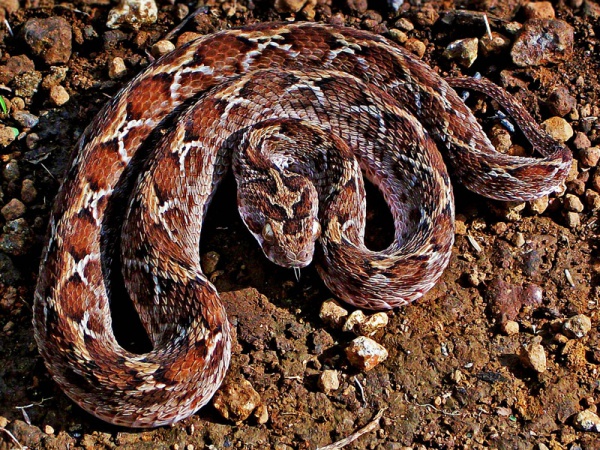Facts About Saw-scaled Viper
The *Echis carinatus*, commonly known as the saw-scaled viper or Indian saw-scaled viper, is a venomous snake found in parts of the Middle East, Central Asia, and the Indian subcontinent. Despite being the smallest member of the "big four" snakes responsible for the majority of snakebite incidents and fatalities, its prevalence in densely populated areas and excellent camouflage make it particularly hazardous. There are five recognized subspecies of this viper.
Saw-scaled vipers typically measure between 38 to 80 centimeters in length. They have a distinctive head, featuring a short and rounded snout, and unique scale patterns. Their coloration varies but often includes shades with whitish spots and dark brown edges. These snakes inhabit various regions across Asia, including India, Sri Lanka, Bangladesh, Pakistan, Oman, the United Arab Emirates, Iraq, Iran, Afghanistan, Uzbekistan, Turkmenistan, and Tajikistan.
Adaptable to diverse environments, the saw-scaled viper can be found on sand, rocks, and in scrublands. They are primarily active during twilight and nighttime and are known for their aggressive behavior and efficient sidewinding movement. Their diet consists of rodents, lizards, frogs, and various arthropods.
In the Indian population, saw-scaled vipers reproduce ovoviviparously. They mate in the winter, and the females give birth to live young from April to August. The venom of these vipers is potent, with an average yield of 18 milligrams per bite. Envenomation can cause severe local and systemic symptoms, with mortality rates around 20%. Immediate antivenom therapy is crucial for survival, and various antivenoms are available for bites from this species.
Interestingly, the venom of the saw-scaled viper is used in the production of drugs such as echistatin and ecarin. Research for a more effective antivenom is ongoing, with clinical trials currently taking place in Sri Lanka.

 India
India